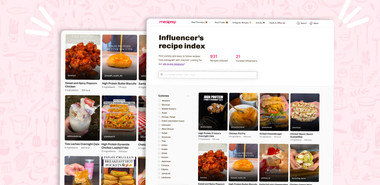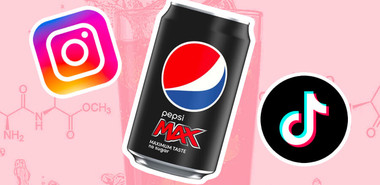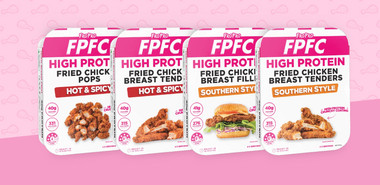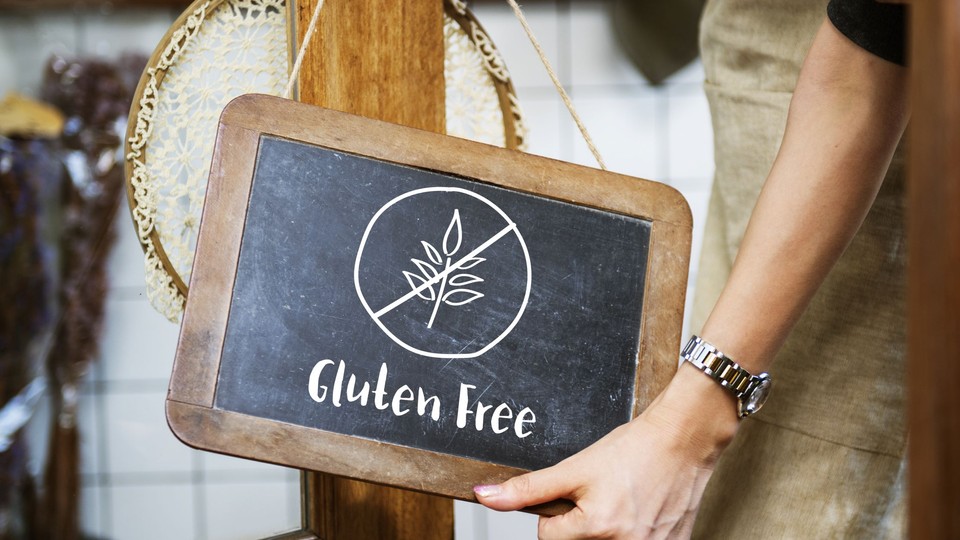
What is gluten?
Gluten is a protein in wheat, barley, and oats. While oats do not naturally contain gluten, the are often process in the same facility as grains that include gluten and therefore are at high-risk for contamination. [1]
Gluten is in foods such as:
- Pasta
- Noodles
- Breads and croutons – stuffing, dressing, croissant, bagels, breadcrumbs
- Biscuits and pastries – pancakes,
- Baked goods – cookies, cakes, quiche
- Cereals and granola – often contain malt extract
- Beer
- Meat substitutes e.g. vegetarian burgers, imitation bacon and seafood (often contains seitan- made from wheat gluten)
- Sauce – soy sauce, cream sauce,
- And more!
The list can seem endless but working with a registered dietitian to understand and address gluten allergy or intolerance can help make a gluten-free diet manageable and stress-free.
What is coeliac disease?
Individuals who have coeliac disease, react negatively to gluten and this causes damage to the gastrointestinal system. This can cause symptoms such as painful bloating, fatigue, nausea and vomiting, malabsorption, diarrhea, loss of appetite and suppression of growth
It is estimated that 1.9% of Australian women and 1.2% of Australian men have coeliac disease, but 80% of individuals with coeliac disease remain undiagnosed.
How do I get tested for coeliac disease?
- Screening:
- Blood tests for transglutaminase (tTG) and deamidated gliadin peptide (DGP) antibodies are used to screen for coeliac disease. Generally, untreated coeliac disease causes these antibodies to be higher than normal, signally that the immune system has had a reaction to gluten. This is not enough to be diagnosed with coeliac disease and it mainly used to highlight if further testing is warranted.
- HLA Gene Testing: This genetic test looks for the HLA DQ2 or HLA DQ8 genes which are present in over 99% of individuals with coeliac disease. A positive test is not enough to diagnose coeliac disease and a small bowel biopsy needs to be conducted.
- Diagnosis:
In order to be diagnosed with coeliac disease, a small bowel biopsy is needed. Please remember that following a gluten-free diet BEFORE testing can result in a false negative.
If you are undertaking a small bowel biopsy and your normal diet does not include adequate gluten, you’d be instructed to take a gluten challenge to ensure that test results are reliable.
What about gluten sensitivity?
Many individuals choose to follow a gluten-free diet without coeliac disease, reporting improved clarity, concentration and gastrointestinal symptoms.
Getting tested for coeliac disease is important because left untreated can…
Gluten sensitive individuals may experienced improve symptoms from excluding gluten due to other components in wheat or reduced FODMAP load. Further investigation of suspected gluten sensitivity is important to rule out other medical conditions
Pros
- In coeliac disease, following a strict gluten-free diet is necessary and lifelong. A gluten-free diet is the best diet for individuals with coeliac disease. It allows individuals with coeliac disease to heal from damage to their intestinal villi that are responsible for absorbing nutrients.
- It is safe if careful planning is undertaken to ensure nutrient adequacy
- Following a gluten-free diet may reduce consumption of refined carbohydrates. It can provide many health benefits if refined carbohydrates (cakes, pastries, biscuits) are replaced with low GI and minimally processed carbohydrates such as rice, soy, corn, quinoa, millet.
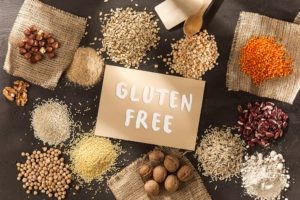
Cons:
- More expensive – Gluten-free alternatives in the form of pre-prepared goods, baked meals and canned goods are often more expensive. One of the contributing factors to the premium price tag on gluten-free products is that there are strict management processes that must be undertaken o ensure no cross-contamination or traces of gluten which can be time-consuming and costly for companies producing gluten-free products.
- Lower fibre – Since gluten is present in many wholegrains, gluten-free foods often replace wholegrains with low-fibre, refined starches and flours. Since fibre is important for gut health and heart health, individuals following a gluten-free diet should incorporate high fibre foods such as fruit, vegetables, legumes and beans, nuts and seeds.
- Lower in protein, higher in fat and salt – The nutrition profile of processed gluten-free products is often poorer than their gluten-containing counterparts. This is because gluten (the protein containing portion of wheat) is removed and high at powders are often added to make the product more palatable. [2] While gluten-free diets are often marketed as assisting with weight loss, many individuals find that they gain weight on a gluten-free diet and the health halo surrounding gluten-free products likely contributes to this.
- Restrictive – A strict gluten-free diet (which is necessary in coeliac disease) can be restrictive and place a heavy emotional burden. Gluten is present in many unexpected foods and products including some medications, gravy, soy sauce, brown rice syrup and soups made with flour as a thickener. Avoiding cross-contamination by using separate toasters, pasta strainers and cooking oil is also necessary. This often makes it difficult to dine out and eat on the go.
Unfortunately, the rise in popularity of gluten-free diets has meant that the term “gluten free” is often viewed as “healthier.” This isn’t necessarily true.
It is important to remember that gluten-free is not signal that the food is more nutrient dense, lower in calories or nutritionally superior. It simply means that the food is free from gluten and safe for individuals with coeliac disease or gluten sensitivity to consume.
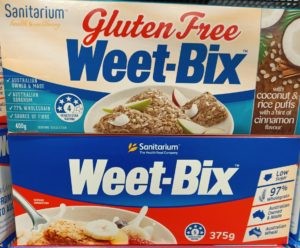
Who is this diet suitable for?
The gluten-free diet was designed for individuals with coeliac disease and can benefit individuals with non-coeliac wheat sensitivity.
Who is this diet not suitable for?
While the gluten-free diet can restrict certain foods, it does not eliminate any food groups and is safe for most individuals. I would, however, recommend that individuals without coeliac disease or gluten sensitivity to reconsider why they are following a gluten-free diet and to note if they have noticed any benefits. In particular, young children and adolescents without coeliac disease) should refrain from following a gluten-free diet unnecessarily as it may cause them to miss out on important nutrients such as fibre, B-vitamins, iron, magnesium, selenium and antioxidants.
How do I get started?
- Start with reading the allergen warning and ingredient list on food labels. Even small amounts of gluten can damage the gastrointestinal lining so it’s recommended that “may contain gluten” or “made on the same equipment as gluten-containing foods” is avoided for individuals with coeliac disease.
- The key phrases that indicate that gluten is in the product are:
- Wheat: wheat flour, wheat germ, wheat bran, wheatmeal, semolina, icing sugar mixture
- Oats: oatmeal, oat bran
- Rye
- Triticale: a mixture of rye and wheat
- Barley: brewer’s yeast, malt vinegar, malt extract, malt
In Australia, a “gluten-free” label means that no gluten has been detected or that less than 0.5 million parts per million (ppm) of gluten was detected. Australia and New Zealand’s standards to use the term “gluten-free” is much stricter than other countries who only require that food products have less than 20ppm. Therefore, individuals with coeliac disease may want to be cautious with purchasing internationally labelled gluten-free products online.
- Prevent cross contamination
- Use separate cooking equipment including toasters, chopping boards, pans and pots. Using toaster bags can help prevent cross-contamination if sharing toasters or convection ovens.
- Avoid sharing condiments e.g. peanut butter, jam, butter. It is no longer safe for an individual with coeliac disease to use a condiment if utensils have been used on gluten-containing products as even a few breadcrumbs can trigger an autoimmune response and damage the gastrointestinal lining.
- Store gluten-free products on top of gluten-containing products. For example, if gluten-containing flour was placed on top of gluten-free flour, spillage could cause cross-contamination.
- Important ingredients to be mindful of as they may be derived from gluten-containing grains
- Maltodextrin
- Starch thickeners
- Some soy products
- Soy sauce
- Cornflour
- Textured vegetable protein
- Vegetable extract
- Bran
- Vinegar
Final Verdict
The gluten-free diet is a safe diet for individuals to follow but requires caution and a in-depth knowledge of gluten-containing foods. You can work with a dietitian to help ease the transition and ensure you are following the gluten-free diet correctly and safely. For individuals without coeliac disease or gluten sensitivity, it’s important to note that this diet is not healthier than a gluten-containing diet.
Gluten-free diet FAQs
What foods do you avoid on a gluten-free diet?
On a gluten-free diet, it is important to avoid foods containing wheat, barley, rye and oats (unless they are strictly gluten-free oats).
What foods are high in gluten?
Gluten is present in food products including bread, cereals, pasta, noodles, pastry, crumbed meats, vegetarian meat substitute that containi wheat gluten, sauces and dressing with gluten.
Are potatoes gluten-free?
Yes, potatoes and sweet potatoes are gluten-free! Just be careful about any sauces or gravy that may contain gluten added to takeaway meals with potatoes.
Is coffee gluten-free?
Yes, thankfully your morning cup of coffee is safe to have on a gluten-free diet.
What is meant by gluten-free?
Gluten-free means free from the protein gluten which is in wheat, barley and rye. Many foods are naturally gluten-free!
What are the benefits of a gluten-free diet?
A gluten-free diet is a safe and necessary lifelong diet for coeliac disease. It can also reduce intake of high processed and refined carbohydrates which can improve overall health.
- In coeliac disease, following a strict gluten-free diet is necessary and lifelong. A gluten-free diet is the best diet for individuals with coeliac disease. It allows individuals with coeliac disease to heal from damage to their intestinal villi that are responsible for absorbing nutrients.
- It is safe if careful planning is undertaken to ensure nutrient adequacy
- Following a gluten-free diet may reduce consumption of refined carbohydrates. It can provide many health benefits if refined carbohydrates (cakes, pastries, biscuits) are replaced with low GI and minimally processed carbohydrates such as rice, soy, corn, quinoa, millet.
